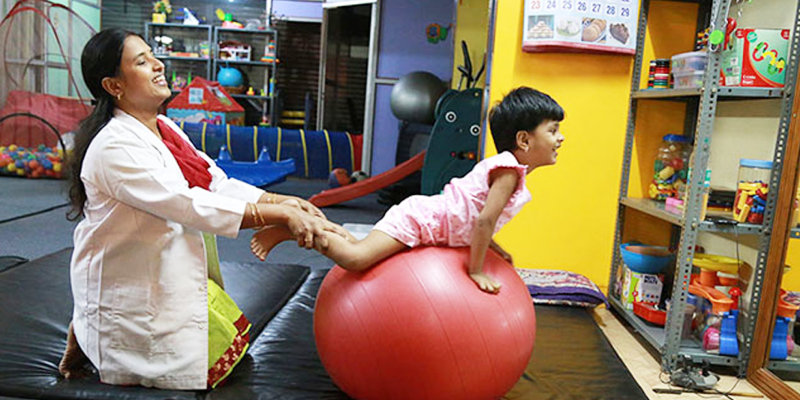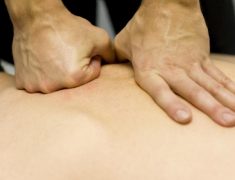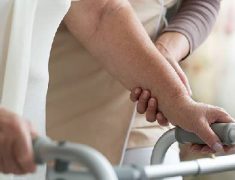Cerebral Palsy is a fatal disease that mars the overall development and causes disability among children. It is caused by the damage to the motor cortex of the brain that affects the motor controls and coordination. Cerebral palsy treatments are highly personalized to suit the needs of the patients. Though there is no cure for the disease, physiotherapy and other therapies can provide reliefs from the symptoms.
Physiotherapy uses techniques like exercises, massages and other activities that manage pain, facilitates movements, increase function, and prevents future complications. Cerebral palsy patients undergo physical therapy treatment for muscle tightness, motor limitation ranges, and sensory impairments and thus enhancing one’s strength, flexibility, motor development and mobility.
More Info About : The State Of Community Based Rehabilitation And What Can Be Done
Physical therapy and cerebral Palsy
Cerebral Palsy is diagnosed based on the presence of clinical signs like improper muscle tone, poor coordination, and difficulties with the movement, poor reflexes, defective posture and balance, impaired gross motor functioning and poor oral motor functions. Physical Therapy can be a front line intervention for the disease that may provide mobility improvement to the patients in addition to reducing the likelihood of complication and difficulty.
The physiotherapist may offer a comprehensive CP treatment plan that includes various techniques like stretching, strengthening, and positioning exercises. Remember, the treatment goals and activities are customized for each child, promoting flexibility, mobility, and stability. Thus, Physiotherapy can enable CP children to engage in daily life activities, thereby improving the overall health and function.
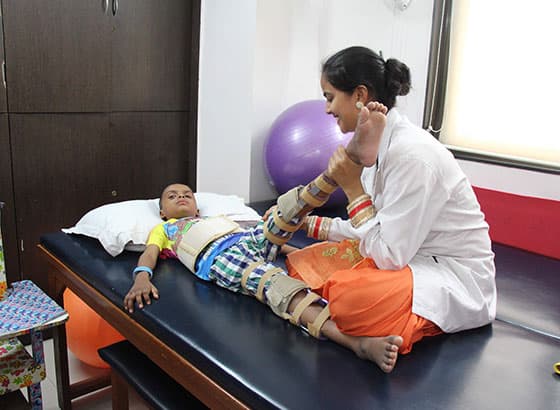
Physical therapy for cerebral Palsy
Every individual case of cerebral Palsy is handled uniquely. The patients are made to undergo diagnosis with a multitude of tests to assess the severity of a person’s disability. The examination will test the flexibility, reflexes to significant body parts, neurological development, physical capability, balance, gait and motion training, joint and tendon flexibility, sensory development, breathing and respiration functioning.
How does Physiotherapy benefit patients with cerebral Palsy?
Cerebral Palsy is a fatal disability affecting the movement of patients, and the physiotherapy treatment for the disease may include:
- The physiotherapist’s diagnoses manage and treat movement problems related to cerebral Palsy.
- The therapists provide intense exercise and activities that enhance physical as well as functional skill.
- All these therapies further prevent complications, deformities, and disabilities.
- Physiotherapists, therefore, facilitates an improved quality of life and promotes well-being, fitness and overall health of the patient.
Physiotherapy treatment for children with cerebral Palsy
After years of research and experiences, Mrs Bobath of London led a breakthrough for physical therapy treatment. It was found that there was a tremendous improvement when the exercises with lying on backs were not performed. The patients were made to put in various positions with the help of therapists. This greatly improved elasticity and flexibility for patients with Cerebral Palsy. The model of treatment discovered by Mrs.Bobath, along with her physician husband came to be known as “Neurodevelopmental Treatment” or NDT.
The following section describes different exercises for kids who have Cerebral Palsy.
Weight exercises with good posture
This form of exercise emphasizes the putting weight on your arms or legs and improving the mobility and flexibility for CP patients. The children with cerebral Palsy are made to perform weight exercises paired with good posture. The weight exercises are found to have a great impact on muscle response. The therapy can be implemented in many ways such as brace on elbows, side sitting, squatting, half standing, kneeling, hands and knees.
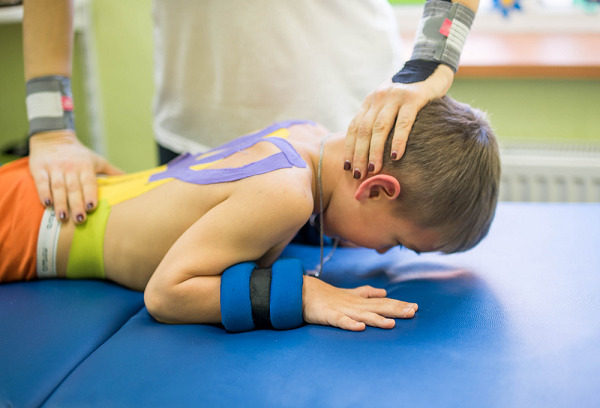
Balanced weight shift
Children with Cerebral Palsy often face a significant issue of balancing their weight correctly. The kids are unable to shift weights that result in unbalanced movements and causing them to fall quickly. Hence, if the therapy involves training kids in this area can significantly improve the overall results.
After undergoing the balanced weight shifting therapy, the kids may start lying on the floor and rollover. The rolling-over exercise is an entertaining activity for the kids. The parents are advised to continue this form of exercise to increase the overall health and well-being of their child.
Closed Kinetic chain exercises
The therapy is essential to improve the movement and posture. It much helps in bettering the involuntary movements among the children with Cerebral Palsy. Closed kinetic chain Exercises improves the posture, enhances muscle flexibility and elasticity, strengthens the muscles, and increases the leg and arm movement.
Joint balancing
Joint balancing is an excellent exercise that helps in controlling movements of kids with CP. The therapists hold the uncontrollable joints while guiding the progress of the patient. The primary goal of this therapy is to help the children move independently without help.
Support of parents
Parents can play a significant role in making these therapies successful. Simple games with your kids, along with other family members, can significantly improve the kids’ muscles strength and flexibility. Clapping their hands while singing, dancing, splashing while bathing and interactive reading are few, simple activities the parents can accommodate in their daily routines.
Early treatment for kids with cerebral Palsy can prevent joint deformities and other complications. Physiotherapies can significantly aid in encouraging movement and balance among the patients and thereby promoting a healthy development from an early age.


